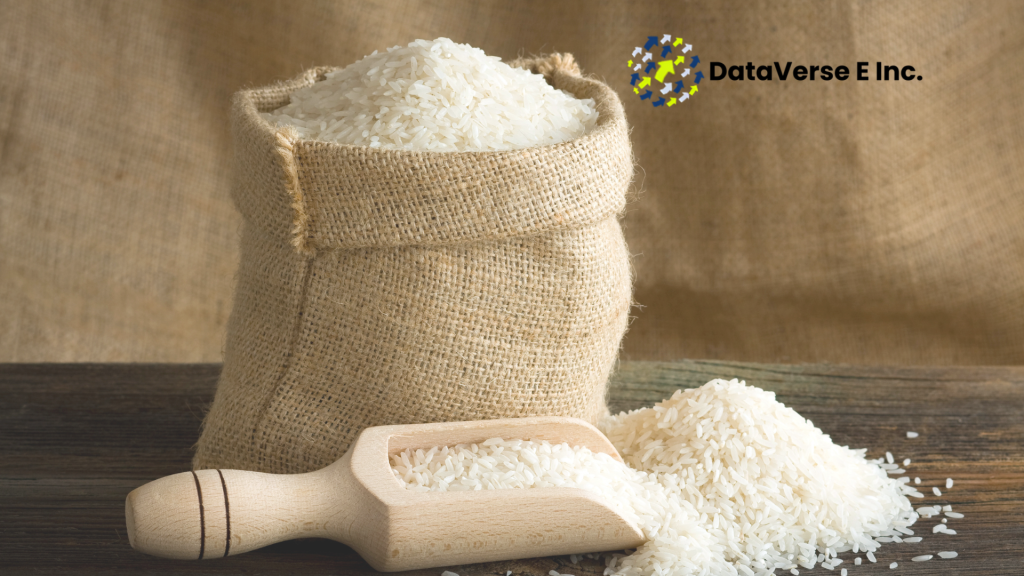Introduction to Drones in Product Exports
The integration of drones into the logistics and shipping sectors marks a significant evolution in the arena of product exports.
Historically, the transportation of goods relied heavily on traditional methods such as trucks, ships, and planes.
However, with the rapid advancement of technology, drones have emerged as a competitive and efficient alternative for export from India and beyond.
These unmanned aerial vehicles (UAVs) have the potential to revolutionize logistics, especially in regions where infrastructure may be lacking or where speed is of the essence.
Recent technological breakthroughs have enhanced the capabilities of drones, allowing them to cover greater distances, carry heavier payloads, and navigate complex environments with increased precision.
Innovations in battery technology, automation, and drone software have made it feasible for businesses to implement drone exports into their supply chains.
As a result, many companies are now exploring how drones can be effectively utilized in the logistics of product exports, providing a cost-effective, fast, and reliable alternative to conventional transport methods.
The growing importance of drones in product exports is underscored by their ability to meet the demands of an increasingly connected world.
As e-commerce continues to thrive, the need for efficient shipping solutions has never been greater.
Drones can facilitate quicker deliveries, reduce transportation costs, and minimize environmental impact by creating more direct routes for sending goods.
Moreover, drone exports allow for enhanced tracking capabilities, providing real-time updates for businesses and customers alike, thus improving overall transparency in the supply chain.
This introduction sets the stage for a deeper exploration of how drones are positioned to transform the landscape of product exports in 2024, paving the way towards a more efficient logistics ecosystem poised to cater to the demands of the modern marketplace.
Benefits of Using Drones for Exports
The incorporation of drones into the export process brings significant advantages that reshape traditional logistics and enhance operational efficiency.
One of the most notable benefits is cost reduction. By utilizing drone technology, companies can minimize expenditures associated with transportation and labor.
Traditional methods, such as trucking or air freight, often incur high costs, especially over long distances.
Drones, on the other hand, operate with lower fuel consumption and require less manpower, allowing businesses to allocate resources more effectively.
This reduction in costs makes drone exports an attractive option for businesses looking to optimize their budgets.
Furthermore, drones significantly increase the speed of delivery.
In an era where time is of the essence, the ability to transport goods quickly can provide businesses with a substantial competitive edge.
Drones can bypass congested roadways and deliver items directly to the consumer or business premises.
This speed not only ensures that products reach their destinations faster but also contributes to enhanced customer satisfaction.
As consumers increasingly seek rapid fulfillment, drone technology offers a timely solution to meet these expectations in the realm of exports.
Another critical advantage of drone usage is the ability to reach remote or hard-to-access locations.
Many regions around the world lack adequate infrastructure for traditional shipping methods, resulting in delays and increased costs.
Drones can navigate varied terrains and deliver products efficiently, facilitating trade from India to even the most isolated areas.
By addressing geographical challenges, drone exports expand the market reach for businesses, fostering inclusion for remote communities in global commerce.

Collectively, these benefits—cost reduction, increased speed of delivery, and access to remote locations—contribute substantially to improved supply chain efficiency and heightened customer satisfaction.
As these technologies continue to develop, their role in the export from India will undoubtedly become increasingly prominent.
Drones in Delivery: Revolutionizing Last-Mile Logistics
The integration of drone technology into last-mile logistics is transforming the landscape of product exports.
This innovative approach employs aerial vehicles to facilitate swift and direct deliveries, thereby addressing the challenges associated with traditional ground transportation.
In recent years, companies have increasingly utilized drone exports to enhance shipping efficiency and reduce transit times, particularly for reaching remote and hard-to-access locations.
Real-world applications of drones for last-mile delivery range from medical supplies to retail products.
For example, community pharmacies have started employing drones to transport essential medications to patients living in rural areas, significantly cutting down delivery times that would typically take hours or even days.
Similarly, e-commerce giants are harnessing drone technology to streamline the delivery process, ensuring that packages reach consumers within minutes rather than hours.
These applications not only demonstrate the potential of drone exports but also reflect the growing acceptance of drone technology among businesses and consumers alike.
However, the transition to drone delivery systems is not without challenges.
Regulatory barriers often hinder the rapid adoption of drone technology, as flight safety and air traffic management present significant obstacles.
Furthermore, the high costs associated with developing and maintaining drone fleets can deter smaller businesses from making such investments.
To address these issues, companies are collaborating with regulatory bodies to establish appropriate frameworks that facilitate safe drone operations while balancing innovation and safety concerns.
The development of advanced navigation systems and drone traffic management solutions is also helping to mitigate risks associated with overcrowded airspace.
Ultimately, the adoption of drones for last-mile delivery signifies a pivotal shift in logistics and supply chain management.
With their ability to expedite deliveries and enhance operational efficiency, drones are poised to play an increasingly vital role in exports from India and worldwide in the years to come.
Surveillance and Tracking Capabilities of Drones
The use of drones in the export industry has revolutionized traditional shipping methodologies, particularly through their advanced surveillance and tracking capabilities.
Drones are equipped with high-resolution cameras and sensors that facilitate real-time monitoring of shipments during the export process.
This technology helps ensure the safety of cargo while complying with international regulations, thus promoting a more efficient export from India and beyond.
One of the primary benefits of utilizing drones for surveillance is their ability to provide extensive visibility over cargo in transit.
By employing aerial imagery and tracking systems, businesses can gain insights into the location and condition of their products throughout the shipping process.
This immediate access to data allows exporters to respond quickly to any unforeseen issues, such as delays or potential hazards, enhancing overall supply chain efficiency.
Moreover, drones play a critical role in mitigating risks associated with theft or damage during transportation.
Equipped with sophisticated software, drones can generate detailed reports that monitor environmental conditions, helping to ensure that exports remain compliant with safety standards.
The integration of drones into logistics operations not only enhances security but also improves accountability.
This capability is particularly beneficial for industries where cargo value is high, making effective surveillance essential to successful drone exports.
Additionally, the data collected through drone technology can be analyzed for patterns and trends, contributing to strategic decision-making.
Businesses can optimize their logistics operations by assessing shipment routes and identifying areas for improvement.
The incorporation of drone surveillance in the export process not only streamlines operations but also positions companies to compete effectively in the global market.
Regulatory Landscape for Drone Use in Exports
The regulatory landscape surrounding drone exports is rapidly evolving, especially as countries increasingly recognize the potential of drones in enhancing logistics and supply chain efficiencies.
In many regions, legislation has been introduced to provide a framework for the operation of drones in various commercial applications, including product exports.
These regulations are typically enforced by government agencies tasked with ensuring safety, security, and compliance with international standards.
In India, for instance, the Directorate General of Civil Aviation (DGCA) has implemented specific rules governing the use of drones for commercial purposes, including exports.
These regulations detail the requirements for drone registration, pilot licensing, and operational guidelines to mitigate risks associated with unmanned aerial vehicles.
This regulatory clarity not only facilitates innovation within the drone industry but also instills confidence in businesses looking to leverage drone technology for export from India.
Globally, there are significant differences in drone regulations. In the United States, the Federal Aviation Administration (FAA) oversees drone operations and has enacted strict rules that cover everything from flight altitude to airspace restrictions.
Meanwhile, in regions like the European Union, a unified regulatory framework is being developed to standardize drone operation across member states, which aims to promote a seamless cross-border export process.
These diverse regulations can pose challenges for businesses aiming to operate drones in international markets, making compliance a critical factor in their export strategy.
The impact of these evolving regulations on businesses cannot be understated.
Companies must stay abreast of local and international laws governing drone use, particularly those that pertain to product exports.
As companies adapt to these compliance requirements, they can better position themselves to harness the operational advantages that drone technology offers, thereby maximizing their potential in the global export market.
Challenges and Limitations of Drones in Exporting
As the utilization of drones in product exports gains traction, it is imperative to acknowledge the challenges and limitations that may impede their widespread adoption.
A primary concern is the technical issues associated with drone technology. Reliable navigation systems, battery life, and communication networks are crucial for drones operating effectively over long distances.
Any failure in these systems could result in significant setbacks, including delayed shipments and loss of goods. Therefore, addressing these technical vulnerabilities is essential to ensure smooth export processes.
Safety concerns also play a pivotal role in the discussion surrounding drone exports.
Regulatory bodies must establish comprehensive guidelines governing the operation of drones in commercial contexts.
Safety risks such as mid-air collisions, especially in populated areas, highlight the need for stringent regulations.
Moreover, the potential for drones to be hijacked or used for unlawful activities further complicates the landscape.
These safety concerns not only impact public perception but also create resistance to the integration of drone technology into conventional export methods.
Public perception is another significant factor influencing the adoption of drones for export from India and beyond.
While many support the advancements in technology, others express apprehensions regarding privacy and surveillance. Media portrayals can shape public attitudes toward drones, affecting their acceptance in commercial contexts.
Additionally, limitations in weight capacity and operational range present practical challenges for industries relying on drones for exporting products.
Drones can typically carry a limited load, restricting their utility in transporting larger or heavier goods. Consequently, addressing these limitations is critical for maximizing the effectiveness of drone technology in the export sector.
Future Innovations in Drone Technology
The field of drone technology is experiencing rapid advancements that stand to significantly enhance its role in product exports, particularly as we move towards 2024.
Among the most anticipated innovations is the integration of artificial intelligence (AI) into drone operations.
AI can enable drones to analyze vast amounts of data in real-time, improving route optimization and supply chain logistics.
By utilizing AI, export from India can become more efficient, reducing delivery times and operational costs while increasing reliability.
This intelligent processing will empower drones to make autonomous decisions, further allowing them to navigate complex environments with minimal human intervention.
Another key area of innovation is the improvement of battery life. Current battery technology limits the operational range and duration of drone flights, presenting challenges for extensive shipping routes.
New developments, such as solid-state batteries and alternative energy sources, promise to extend flight times substantially. This enhancement could facilitate longer-range deliveries and make drone exports more viable for international trade.
With greater battery efficiency, businesses can transport goods to remote or underserved regions without frequent recharging, expanding their market reach significantly.
Moreover, enhanced navigation systems equipped with advanced sensors and machine learning capabilities are set to revolutionize drone operations.
These systems can improve accuracy in identifying and altering flight paths, ensuring safety and compliance with increasingly complex regulations.
Drones will be capable of dynamically responding to environmental conditions and obstacles, which is particularly essential for navigating densely populated urban areas or challenging terrain.
As these innovations materialize, the expansion of drone exports will not only address pressing challenges but also open new avenues for businesses leveraging this technology in their export operations.
Case Studies: Successful Drone Implementation in Exports
Several companies have begun to harness the potential of drones as a transformative tool in their export operations.
One notable example is a tech startup based in India that has successfully integrated drone technology into its supply chain logistics.
This company focused on reducing delivery times for critical components exported to foreign markets.
By utilizing drones, they managed to perform last-mile deliveries, resulting in a significant decrease in transit time from several days to just a few hours.
This efficiency not only enhanced customer satisfaction but also solidified the company’s reputation as a leader in fast and reliable export from India.
Another compelling case involves a leading agricultural exporter, which utilized drones for monitoring and surveying crops.
This enabled the company to optimize harvest schedules, ensuring that products were shipped at peak freshness.
Through precise drone monitoring, they were able to reduce spoilage and waste, directly impacting their profitability.
The implemented drone exports program also allowed for quicker responses to market demands, illustrating how data-driven decisions can significantly influence export efficiency.
In the logistics sector, a global shipping company adopted drones to track shipping containers and manage their inventory levels.
With real-time updates provided by drones, the company was able to streamline its operations.
This led to improved accuracy in inventory management and reduced the costs associated with misplaced cargo.
Such implementation has not only boosted their productivity but has also redefined traditional shipping methods in favor of more technologically advanced solutions.
Collectively, these case studies underscore the critical role that drones can play in enhancing operational efficiencies in various industries.
The lessons learned from these implementations offer invaluable insights for companies looking to incorporate drone exports into their own strategies, ensuring that they can compete effectively in an increasingly digital global marketplace.
Conclusion: The Future of Exporting with Drones
The advancement of drone technology is set to redefine the landscape of product exports, especially as we approach 2024.
Drones offer numerous advantages that can enhance the efficiency and speed of export from India, thereby transforming traditional shipping practices.
With the capability to transport small packages quickly and circumvent obstacles that ground transportation faces, drones present an innovative solution to logistical challenges.
As businesses look to remain competitive in the global market, embracing drone exports can lead to significant cost reductions and increased delivery speed.
The ongoing investment in research and development within the aeronautics field is paving the way for more refined drone capabilities, which include improved payload capacities and advanced navigation systems.
This will enable exporters to optimize their operations and meet growing consumer demands for fast, reliable delivery.
Furthermore, the regulatory landscape is gradually evolving to accommodate the use of drones in commercial operations.
Legislative bodies are recognizing the potential of drone technology and are likely to develop frameworks that will allow for safer and more permissive drone operations.
This will facilitate greater adoption of drone exports across various sectors, from agriculture to manufactured goods.
As stakeholders contemplate the integration of drones into their exporting strategies, it is essential to begin planning now.
By understanding the implications of drone use in logistics and evaluating how they can fit within existing export frameworks, businesses can position themselves to benefit from these technological advancements.
Ultimately, the future of exporting with drones holds immense potential, and industry participants must remain proactive in exploring the possibilities that this innovative technology brings.






No comment yet, add your voice below!